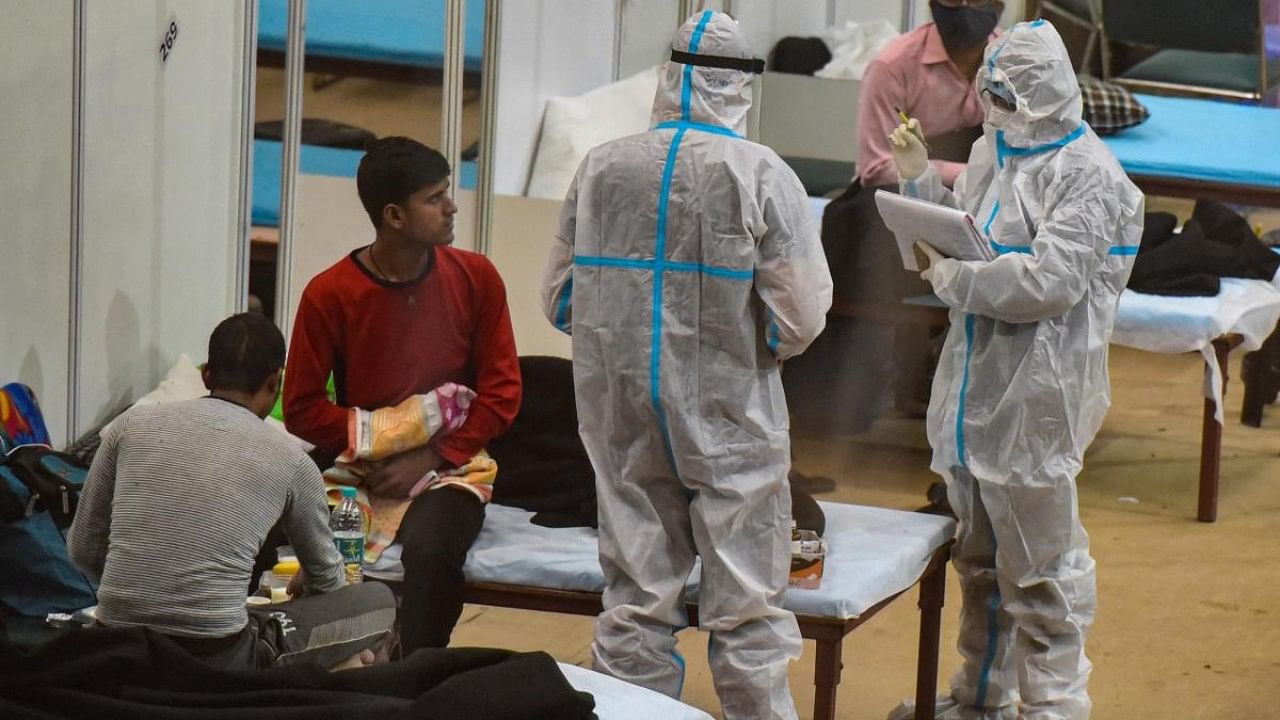
The nurse to doctor ratio in India is estimated to be 1.7:1 on the basis of NSSO data, while the ratio of allied health workers to doctors is estimated to be 1:1, according to a report by the WHO and the Public Health Foundation of India.
Although there was no standard skill-mix ratio of different health workers, most OECD countries reported approximately 3-4 nurses per physician, the report stated.
The Indian High Level Expert Group (HLEG) recommendation for the nurse-doctor ratio in India stood at 3:1, it said.
Moreover, there was also a need to strike a balance (right skill-mix) between doctors and allied health workers, it added.
The nurse to doctor ratio is estimated to be 1.7:1 in India on the basis of NSSO data, with Punjab (6.4:1) and Delhi (4.5:1) on the higher side even as the states of Bihar, Jammu and Kashmir and Madhya Pradesh have less than one nurse per doctor, the report stated.
It recommended that India needs to invest in human resource for health (HRH) for increasing the number of active health workers and also to improve the skill-mix ratio which requires investment in professional colleges and technical education.
India needs to encourage qualified health professionals to join labour markets and ensure additional trainings and skill building for those who are already working but are inadequately qualified health workers, the report stated.
In addition to increased availability of and accessibility to quality health workers by the population in general, enhanced investment in HRH will lead to strengthening of the health system for dealing with pandemic situations like Covid-19 and any other epidemic, it added.
It will lead to economic growth, increased women participation in the labour market, formalisation of the labour market and overall economic wellbeing, the study said.
The study presents an updated estimate on the size and composition of stock of health professionals and active health workforce in the country.
Using the information available from the National Health Workforce Account (NHWA) on the stock of health professionals and Periodic Labour Force Survey (PLFS) conducted by the National Sample Survey Office (NSSO 2017–18) on active health workforce, the study estimated a total stock of 5.7 million health workers which included allopathic doctors (1.1 million), dentists (0.27 million), nurses (2.3 million), pharmacists (1.2 million) and traditional medical practitioners (AYUSH 0.79 million).
However, the active health workforce size is estimated (from NSSO 2017-18) to be much lower (3.04 million), with allopathic doctors and nurses estimated as 0.78 million and 1.36 million respectively.
"The right balance in the skill-mix ratio for health workers provides optimum healthcare conditions. Contrasting the skill-mix ratio with the density of doctors at state levels, an inefficient skill-mix is found to exist between doctor and nurse and doctor and allied health professional in most states in India," the report stated.
The public sector is challenged by a high rate of vacancy of sanctioned positions. The Rural Health Statistics highlights this issue, the study said.
While the shortage is most pronounced for specialists posted at Community Health Centres (CHC), India faces shortages across states for various positions. A review of the serially published reports of the Rural Health Statistics shows a slow but definite growth in the number of health providers at the overall country level.
The vacancies are attributed to diverse reasons that range from barriers in recruitment, litigations against recruitment processes and premature exits from the system, especially in contractual positions, the report stated.
Increase in the number of health workforce and the right balance in the skill mix requires a supply of health professionals at an increased rate. The supply side of health professionals is an important parameter in reaching the goals for minimal optimum density of the health workforce, it added.
An analysis of the health workforce projections provides the estimated density of skilled health professionals (doctors, nurses and midwives) per 10 000 population.
"Considering the current rates of growth are sustained, the required density of health workforce will still not be met as the rise in the number of health professionals will be balanced by a rise in the country's population. At the present level of growth on the supply side, the skill-mix ratio of doctor:nurse is unlikely to alter by 2030.
"A near 200 per cent growth on the supply side for nurses will improve the doctor:nurse ratio to 1:1.5 by 2030. This will require a further rapid scale-up of nursing programmes," the report said.
Check out latest videos from DH: